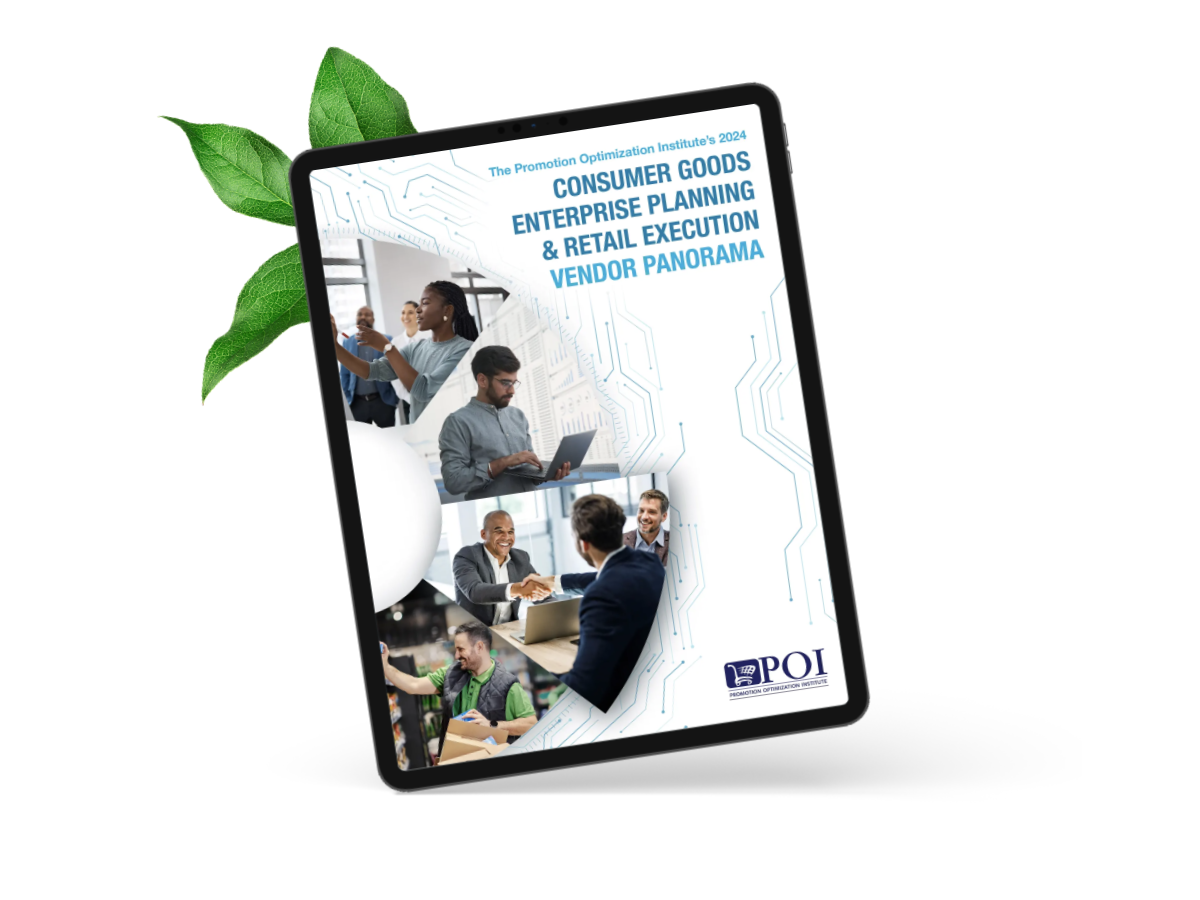Sales enablement: why choose a foodservice-specific solution?

Table of Contents
What is sales enablement?
Sales enablement tools and resources
Benefits of sales enablement technology
How to build a sales enablement strategy
How to measure sales enablement performance
Why TELUS Consumer Goods for sales enablement?
What is sales enablement?
The primary goal of sales enablement is to increase sales performance and drive revenue growth. Equipping sales teams with tools, content, processes and training helps them effectively engage with prospects, customers, brokers and distributors. With the right technology, sales teams can sell more efficiently by identifying high-quality targets, leveraging data-driven messaging and providing relevant product recommendations.
For foodservice manufacturers, a successful sales enablement strategy must address the specific challenges of the foodservice industry. These include navigating complex distribution channels and management group relationships, harmonizing disparate data sets and tracking various pricing structures. But with the right tools, and close collaboration between sales and marketing, sales teams can execute successful selling strategies.
Sales enablement tools and resources
Key components of a strong sales enablement plan include training and development, content and collateral, customer relationship management (CRM) technology and market insights.
Training and development
Training might include providing detailed information about the product portfolio, data on industry trends and channel-level insights. Educating sales teams on marketing campaigns, product messaging and price promotions helps foster a consistent go-to-market approach. Developing sales skills such as negotiation, relationship building and consultative selling are also key to building successful sales teams.
Content and product catalogs
Customer-facing content includes presentations, brochures, case studies and digital content to showcase product benefits. Technical product details such as ingredients, nutritional information and packaging specifications are also extremely important in foodservice sales. Marketing collateral can include industry insights, competitor analysis and customer success stories to demonstrate product performance.
CRM technology
Customer relationship management (CRM) platforms help sales teams track customer interactions, forecast sales and manage accounts. These salesforce automation tools support standardized processes for pipeline management, sales call management and objective management. They can also use purchasing data to provide salespeople with relevant information and product recommendations.
Customer and market insights
Customer and market insights help salespeople tailor their messaging to specific buyer types like distributors, foodservice operators or group purchasing organizations (GPOs). Market data on menu trends, promotional activity and competitor positioning can help guide product selection. Sales enablement platforms provide sales teams with the ability to make customer-specific, data-driven recommendations.
Benefits of sales enablement technology
Sales enablement helps improve sales efficiency as teams spend more time selling and less time on administrative tasks. They are able to better manage complex sales processes, keep up with industry trends and support new product launches. This helps sales teams engage prospects more effectively, address their specific needs and build stronger customer relationships.
Navigate complex sales processes
The foodservice sales ecosystem is extremely complex. There are often multiple layers of distributors, different product specifications for each channel and disparate data sets to harmonize. Sales cycles can be long, and typically involve multiple decision makers.
For example, to close a deal with a national restaurant chain, a foodservice supplier may need approval from franchisees, regional managers and corporate stakeholders. Sales enablement tools help teams address the concerns and goals of different stakeholders throughout the buying process.
Reduce administrative tasks
Foodservice sales teams often manage large accounts, wide geographic territories and numerous product lines. Administrative tasks, reporting and managing orders takes valuable time away from prospecting for new business opportunities.
Sales enablement tools, such as CRM systems, automated reporting and content management platforms, increase the efficiency of sales teams. These tools free up time for sales reps to focus on engaging customers and closing deals.
Keep up with industry trends
Sales teams need regular updates on the latest trends. This helps them adapt their pitches accordingly, and align their product solutions with evolving consumer and operator preferences. Sales enablement helps sales teams position products effectively by equipping them with information to demonstrate expertise and add value. This could include insights about competitors, foodservice trends data and customer-centric sales strategies.
Support new product launches
Executing a successful product launch or promotional push requires close coordination between sales and marketing. At this stage, sales enablement includes educating sales teams on product features, market positioning and customer value propositions. Equipping sales teams with the knowledge, tools and resources to introduce new products is crucial to go-to-market success.

How to build a sales enablement strategy
Executive leadership buy-in and support is critical for the success of a sales enablement strategy. Implementing sales enablement tools requires a coordinated effort that involves planning, technology, processes and alignment across multiple departments. Executive buy-in can ensure that sales enablement gets the resources, budget and attention it needs to succeed. The goal is to foster an efficient and effective sales process by providing sales teams with the tools, content and insights to succeed. Implementing this requires the following:
Organization
Alignment with broader company objectives and KPIs, such as regional expansion or new product launches
Performance dashboards to track sales metrics, including revenue growth, market share, distribution goals and customer acquisition and retention
Cross departmental collaboration, particularly between sales and marketing, product and category teams and customer insights and data analytics teams
Processes
Standardized sales processes, from lead generation to implementation and everyday customer support. These could include account-based selling strategies, workflows for managing key accounts, support for issue resolution and more
Training and development programs, particularly product portfolio and sales skills development
Implementing feedback loops for sales teams to provide insights on what is working and what isn’t
Execution
Creation of sales content and collateral. This could include sales playbooks by customer type, presentations, one-pagers, case studies, marketing campaigns and promotional offers
Access to consumer and operator insights, including category trends, distributor preferences, new product launches and industry news
Tailoring the strategy to distinct customer and buyer personas and changing consumer preferences
While it may appear to be a lot of work, implementing a sales enablement strategy is worth the effort. These processes and resources support an ongoing optimized way of working that should improve efficiency, enhance customer relationships and ultimately increase sales revenue.
How to measure sales enablement performance
Understanding your team's ability to close deals quickly, upsell and retain accounts and drive repeat business is crucial to grow market share. CRM and sales enablement tools can help track salesforce performance metrics and KPIs, helping you identify challenges and opportunities across teams. Dashboards and analytics tools give insights into sales team activity, including regional trends and which content the sales team finds most useful.

Why partner with TELUS Consumer Goods for sales enablement?
TELUS Sales Enablement is a powerful tool for foodservice manufacturers and brokers offering robust data insights, optimized workflows and efficient collaboration features. The platform offers a comprehensive suite of tools that can help streamline sales processes and empower sales teams to succeed. Key features include:
Data-driven insights
TELUS Sales Enablement provides real-time analytics and dashboards that help sales teams monitor performance and identify growth opportunities. Get purchasing insights by product, operator, membership group and more, including distributor performance by contract vs. street business. Understand where you are against your budget and build your pipeline with prescriptive targeting to fill product voids and white space.
Integrated CRM with industry-specific data
The platform comes pre-loaded with foodservice specific customer details, as well as an integrated product catalog powered by GS1 data, and further enhanced to support the needs of a foodservice sales person. By simplifying tasks like sample distribution, account management and order tracking, sales teams can focus on winning new business.
Seamless collaboration and product visibility
TELUS Sales Enablement supports better communication between internal teams and external brokers. By providing a centralized system, all stakeholders work with the same data. This can improve decision-making speed and facilitate the sharing of product and promotional content across the organization.
Integrated marketing features
Marketing tools are built directly into the CRM system to support efficient campaign execution and lead routing. Similarly, content and asset management features enable smoother and more consistent go-to-market processes. Designed by foodservice industry experts, TELUS Sales Enablement caters to the unique needs of foodservice sales operations.
For more information on how to empower your sales teams to succeed explore TELUS Sales Enablement.

